Trying to pick the right season for a trip to the Shasta Cascade and North Coast? Yeah, it’s a lot. This stretch of Northern California changes its mood with every season—spring’s wild waterfalls, summer’s unbeatable hiking, and autumn’s crazy-bright foliage.
Honestly, the “best” time depends on what you want. Spring brings dramatic waterfalls and wildflowers, summer means clear trails and long days, and fall is a dream for anyone with a camera or a thing for golden leaves. I’ve wandered these parts in every season, and let me tell you, timing really can turn a good trip into a “did that just happen?” kind of adventure.
Let’s break down what each season has in store. You’ll get the scoop on the best months for waterfall chasing, which trails are wide open, and how to pick the right time for what you love most.
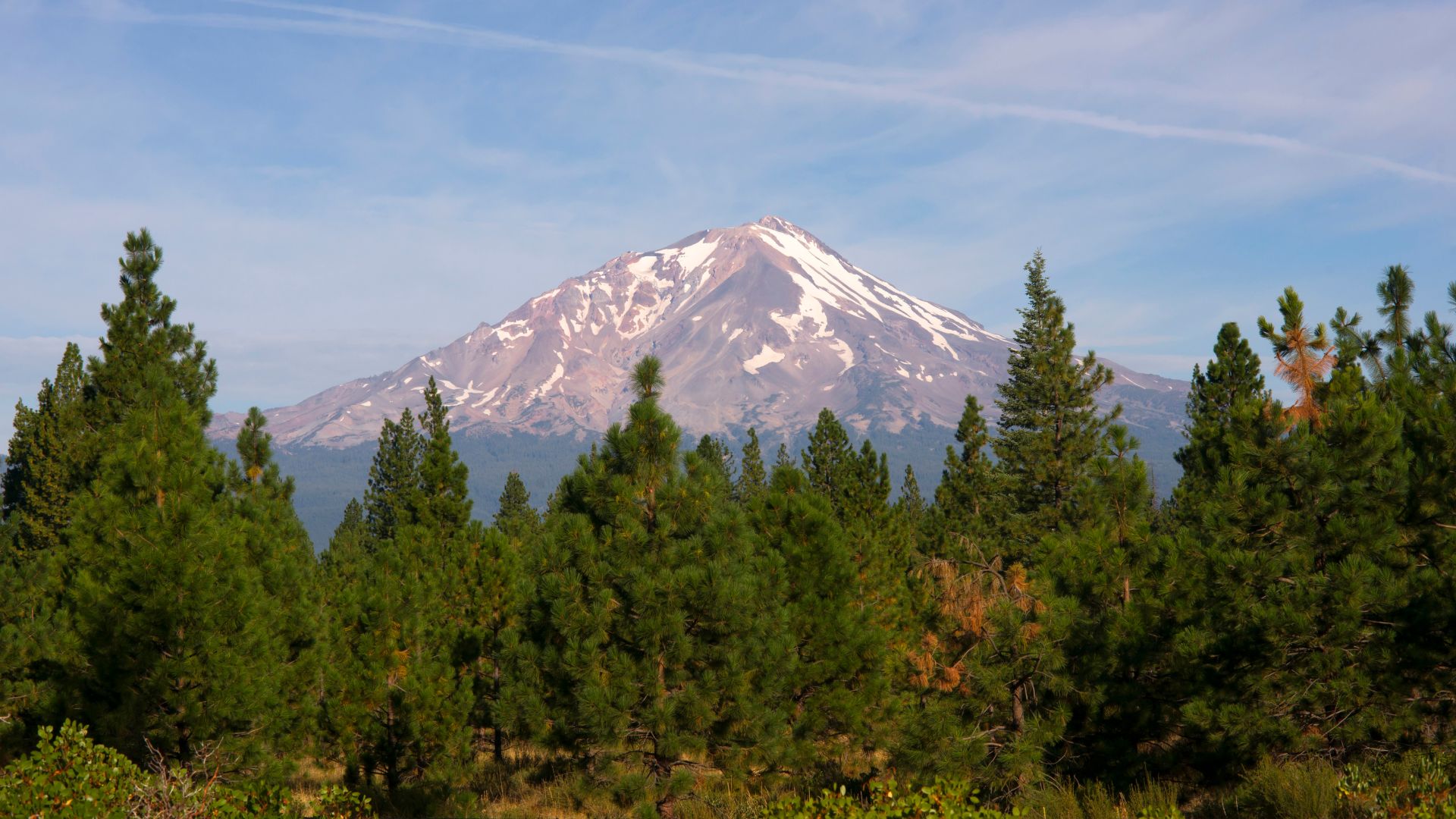
How Seasons Shape the Shasta Cascade & North Coast Experience
The Shasta Cascade shifts its personality with the weather. Mild spring temperatures roll in, then summer turns up the heat. Each season brings something different, and crowd levels swing wildly too.
Weather Patterns and Climate Overview
Spring hits with mild temps and a bit more rain. Mornings stay cool, afternoons warm up, and every hike feels fresh.
But don’t trust the forecast too much—April and May love to surprise you. Layers are your friend out here.
Summer brings the heat, with days in the mid-70s to mid-90s. The sun sticks around, and the weather finally settles down.
It’s perfect for being outside, but wildfire risks rise. That’s just part of summer in northern California.
Fall cools things down and shows off with changing leaves. The weather gets a bit moody as winter creeps in.
Mornings can be chilly, afternoons mellow out. Hiking and photography just hit different in this light.
Winter flips the switch with snow and cold. Days get short, and adventures get a little tougher.

Understanding Seasonal Attractions
Spring waterfalls really put on a show. Melting snow from up high feeds 42 waterfalls across the region.
Burney Falls and McCloud Falls absolutely roar this time of year. Photographers come from all over to catch the action.
Summer trails finally clear as the snow disappears. Mount Shasta’s climbing routes open up, and people flock here from June to early September.
Routes like Hotlum-Bolam Ridge and Clear Creek become accessible. Fishing, swimming, and kayaking take over the lakes and rivers.
Fall colors explode in reds and golds. The Sacramento River trail lights up for hikers and bikers.
It’s a photographer’s playground, and honestly, hiking just feels easier with that crisp autumn air.
Winter adventures shift to snow sports and off-season climbing. Most folks don’t summit Mount Shasta in winter, but if you’re after solitude, you’ll find it.
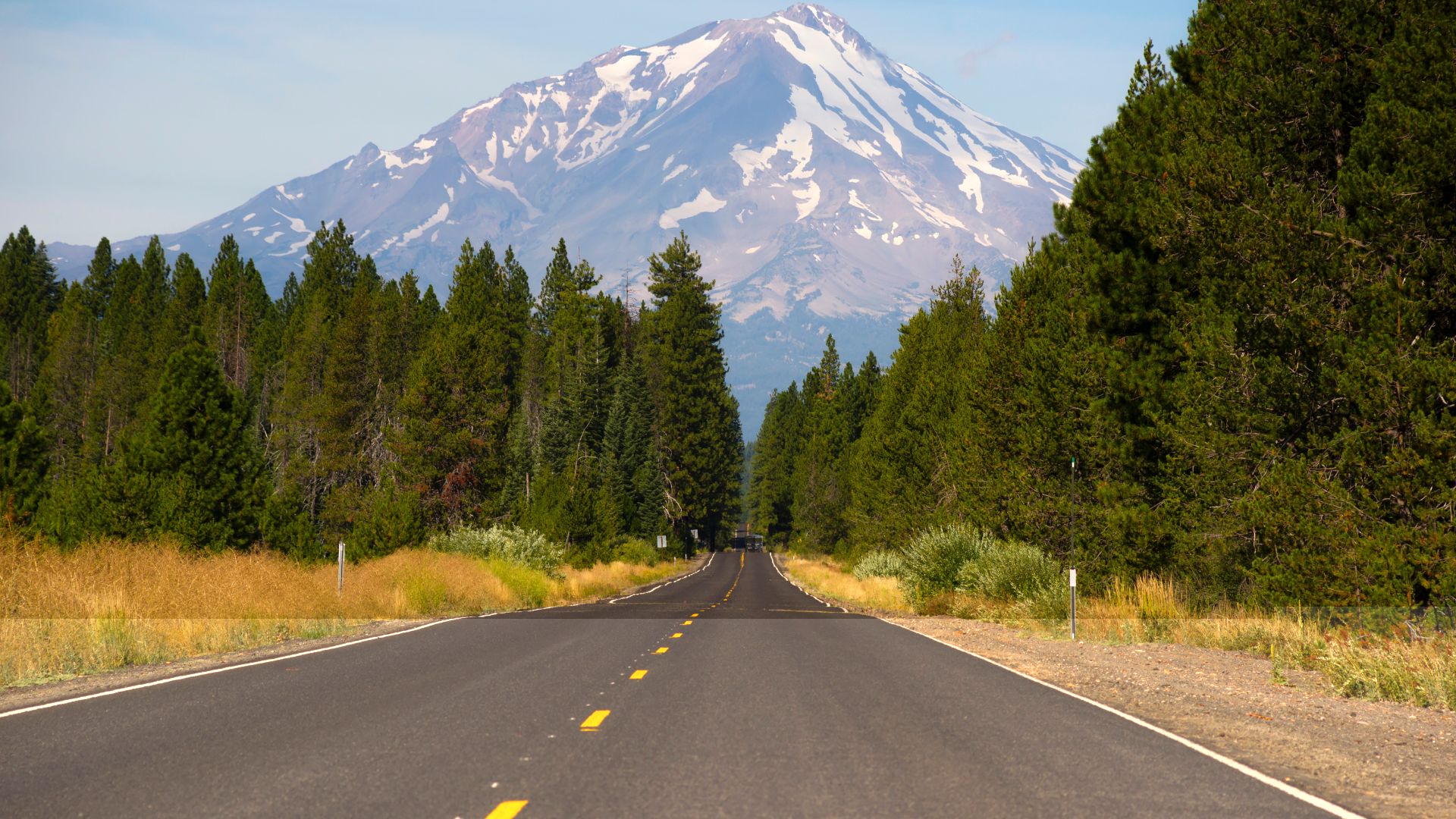
Crowd Levels by Season
Summer draws the biggest crowds—no surprise there. Warm weather, school’s out, and everyone wants to see Burney Falls or hit the main trails.
If you want some space, head out early or closer to sunset. That’s when you’ll find a little peace.
Spring and fall balance things out. The weather’s still good, but you won’t battle as many people for a campsite or a spot at a viewpoint.
It’s easier to find a place to stay, and prices drop a bit too. Waterfalls and overlooks feel a lot more peaceful.
Winter is the quietest. Many high trails close with snow, so folks stick to what’s still open.
If you’re craving silence and snow-dusted forests, winter’s your season. Just know the weather can mess with your plans.
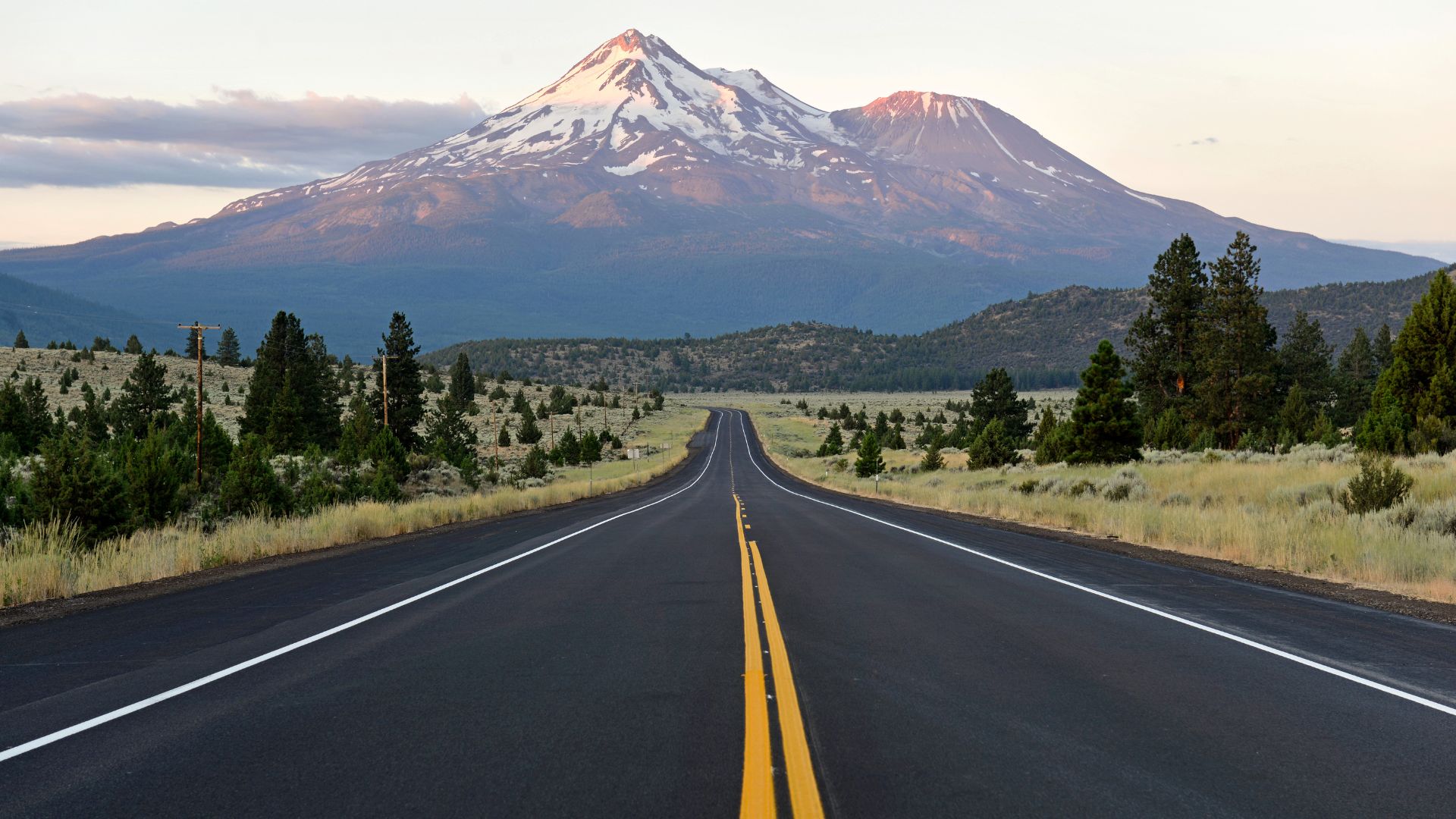
Best Time to Visit Mount Shasta: What Each Season Offers
Mount Shasta’s 14,179-foot summit changes its vibe with the calendar. Summer means open high-altitude trails, spring brings waterfalls, and autumn is all about colorful forests.
Summer Adventures on Mount Shasta
Summer is when Mount Shasta really comes alive. Days hit 70-80°F, nights drop to the low 40s.
Every high trail opens up. Snow’s gone, so hikers and backpackers finally get their shot.
Popular Summer Activities:
- Summit climbs
- Multi-day backpacking
- Rock climbing on granite faces
- Kayaking and swimming at the lakes
- Scenic drives up mountain roads
June to August gives you the longest days. More daylight, more adventure.
The catch? Crowds and higher prices. Trailheads fill up fast, and campsites get snapped up months in advance.
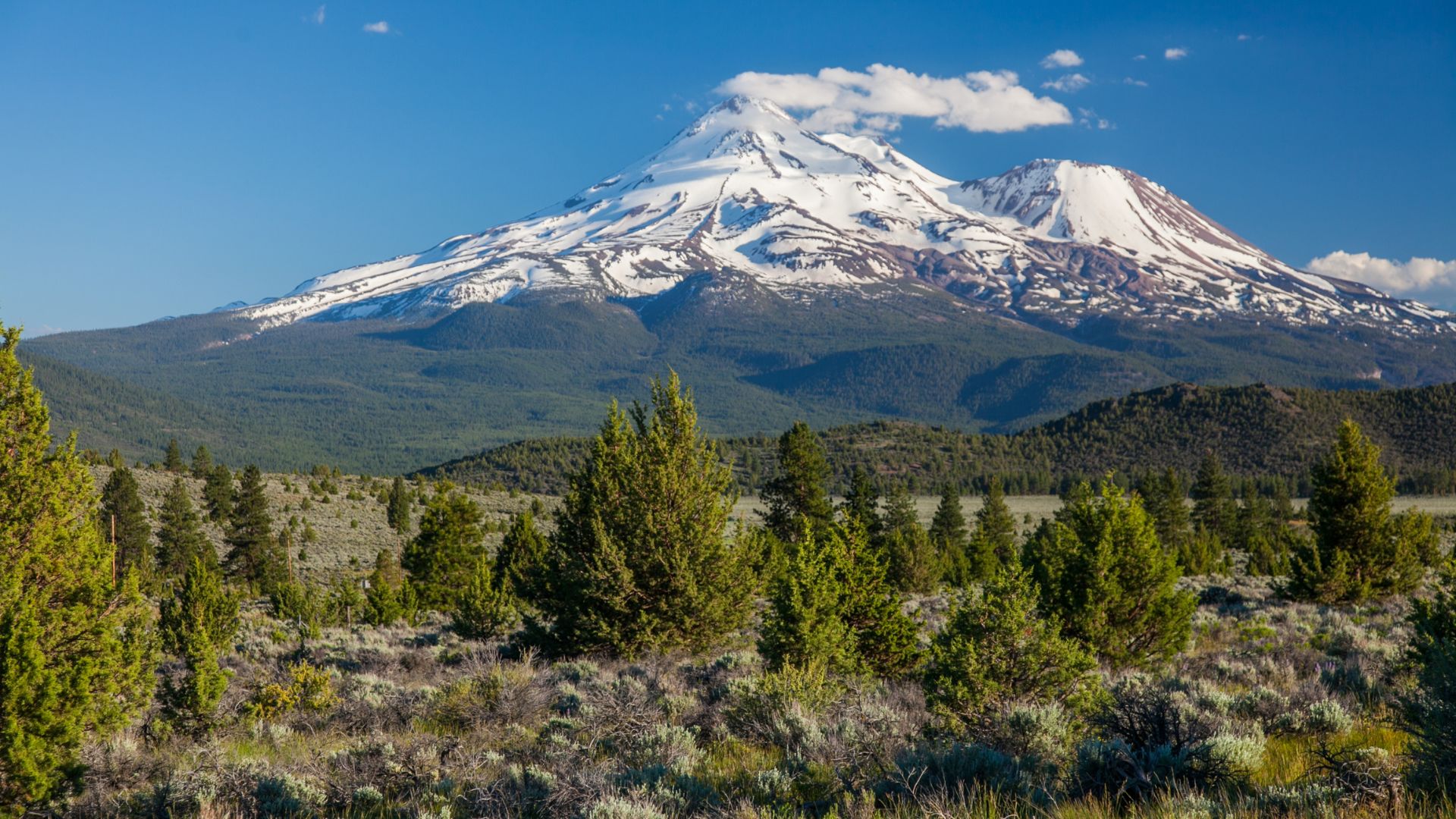
Spring Waterfalls and Wildflower Displays
Spring turns Mount Shasta into a waterfall wonderland. Rushing water and wildflowers take over.
You’ll see temps from 38°F at night to 58°F by day. It feels great, but the weather can flip without warning.
Spring Highlights:
- Wildflower meadows bursting with color
- Waterfalls at their loudest
- Fewer people than in summer
- Cool, easy hiking
Some higher trails stay snowy through May. Storms can roll in fast, so keep an eye on the sky.
Late April to early June is prime for wildflowers. Lower trails open up first, but the alpine spots might still be buried until July.
Autumn Foliage and Tranquil Escapes
Autumn drops the temps and paints the forests gold. Days hover around 58°F, nights chill down to 38°F.
September to November is just about perfect for hiking. After Labor Day, the crowds thin out.
Autumn Benefits:
- Sweet spot for hiking temps
- Jaw-dropping foliage
- Most high trails still open
- Cheaper places to stay
Golden aspen and oak leaves cover the hills. Wildlife gets busy prepping for winter.
But by late autumn, snow can sneak in and close the higher trails.
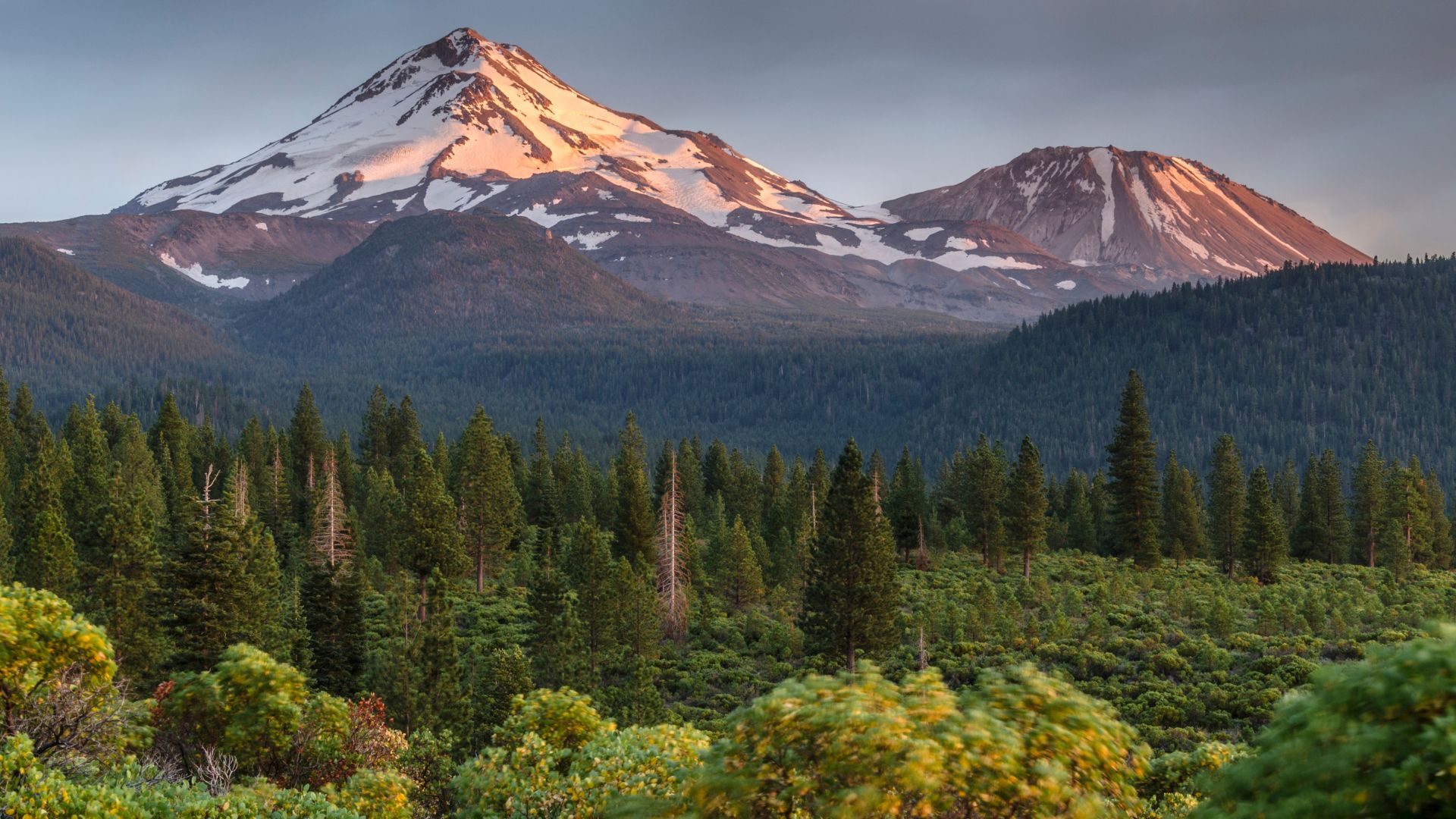
Winter Activities and Snow Sports
Winter brings quiet and deep snow to Mount Shasta. Days average 38°F, nights dip to 24°F.
Snow blankets the whole mountain from December to February. Most regular hiking trails shut down.
Winter Recreation:
- Skiing and snowboarding at Mt. Shasta Ski Park
- Snowshoeing on lower trails
- Ice climbing frozen falls
- Moody, snowy landscapes for photos
Heavy snow is the norm. You’ll probably need chains or 4WD to get around.
Lodging prices drop, and you’ll have the place mostly to yourself. The snow scenery is unreal for photographers.
Summer Trails: Top Hiking and Outdoor Activities
When summer hits, the Shasta Cascade turns into a hiker’s dream. Trails clear up, the weather feels just right, and you’ve got everything from tough climbs to lazy lakeside walks. Camping and scenic drives round out the season.
Iconic Hiking Routes and Scenic Byways
Mount Shasta leads the way with trails for every level. Lower routes open early, while the high stuff gives you epic views.
Castle Lake Trail offers a moderate 2.2-mile round trip. The payoff? An alpine lake with a killer Shasta view. Go early if you want some quiet.
Panther Meadows sits at 7,900 feet and is much easier. Wildflowers, mountain views, and a short walk—families love it.
For a drive, Everitt Memorial Highway climbs Shasta’s slopes. It tops out at 7,900 feet and hits several trailheads. Bunny Flat is a must-stop for those big panoramas.
Mount Shasta Ski Park runs summer activities on weekends. You’ll find mountain biking, disc golf, and chairlift rides from 10 AM to 4 PM, Saturdays and Sundays.
Best Spots for Camping and Picnicking
Lake Siskiyou is a summer classic. You can camp, swim, paddle, or just hang out with Mount Shasta in the background. Campgrounds offer a mix of setups.
McBride Springs Campground sits at 3,000 feet up the mountain. There are 10 sites, picnic tables, and fire rings. It’s first-come, first-served, so don’t show up late.
Castle Lake has picnic tables and restrooms right by the water. The lake’s chilly, but a swim on a hot day feels amazing.
Fowlers Campground hugs the Sacramento River with shaded sites and river access. You get picnic tables and bear boxes—handy for keeping snacks safe.
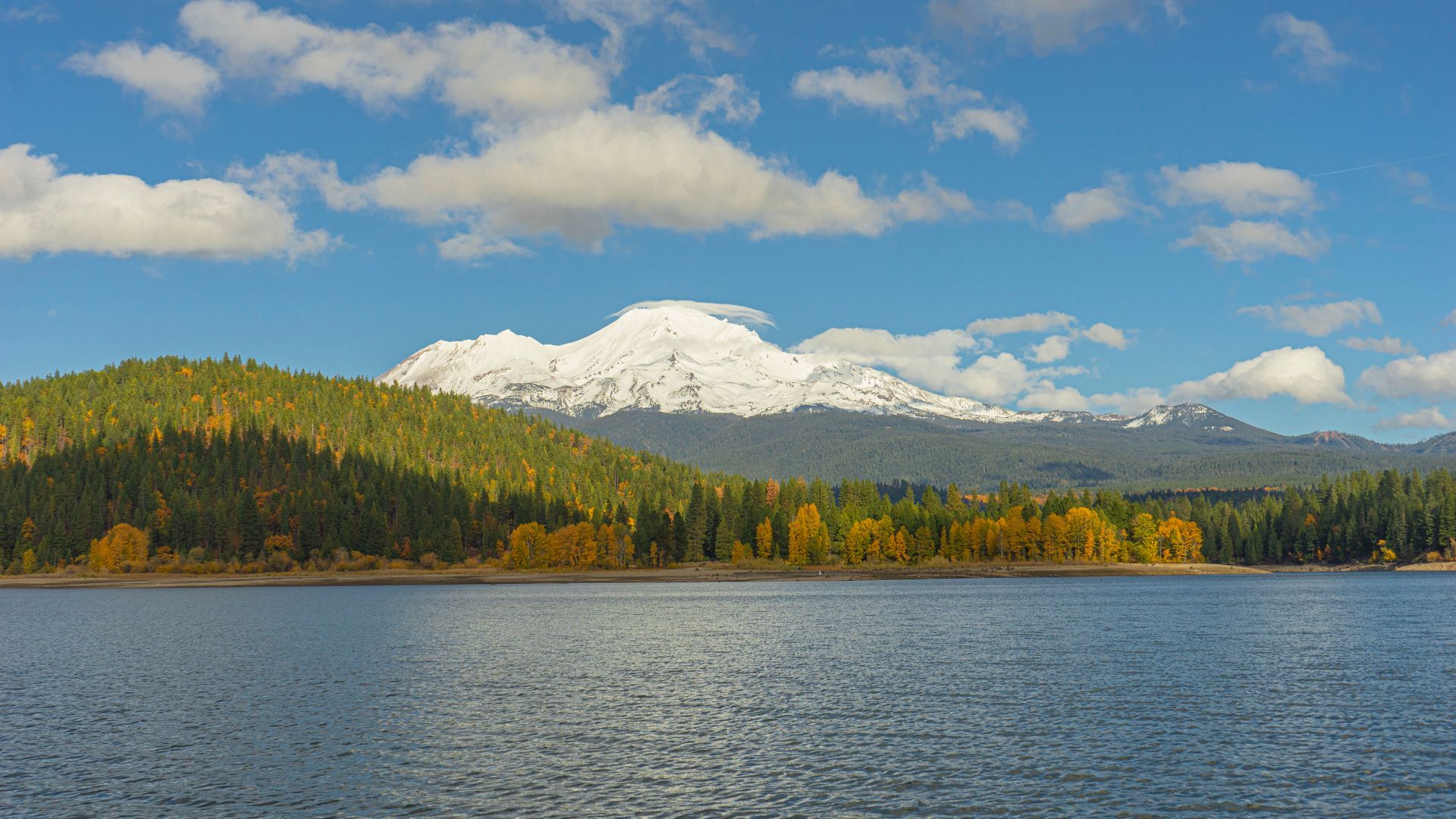
Tips for Summer Exploration
Start your hikes early. The heat and crowds build fast, especially on lower trails. Plus, mornings are better for spotting wildlife.
Bring more water than you think you’ll need. I usually pack a liter for short hikes and double that for longer treks. Summer heat sneaks up on you.
Fire restrictions are common in summer. Always check the rules before lighting a fire or using a ring. Many places ban campfires during high-risk periods.
Dress in layers. Temps swing a lot with elevation. Hats and sunscreen are essential—mountain sun is no joke.
Check trail conditions before you go. Some high routes hold onto snow into early summer. Ranger stations usually have the latest updates.
Autumn Colors: Exploring Fall Foliage and Photography
Fall in Northern California is something else. The Shasta Cascade and North Coast light up with golden aspens, red maples, and fiery oaks. If you’re into photography, this is your season. Timing and location matter, but the payoff? Worth it.
Prime Locations for Leaf Peeping
Mount Shasta Area stands out for fall color. Lower elevations (3,000 to 5,000 feet) burst with oak, maple, and aspen.
Castle Lake Road is a favorite for photographers. Forests layer gold and red, and early mornings give you the best light.
McCloud River Falls puts on a show with autumn colors. The three waterfalls make dramatic backdrops.
Shasta-Trinity National Forest stretches out with loads of deciduous trees. Forest roads lead to quiet, colorful spots.
Coastal Areas near Eureka and Redding have a different palette. Redwoods mix with bigleaf maples and buckeye.
Some coastal highlights:
- Prairie Creek Redwoods State Park
- Humboldt Redwoods State Park
- Fern Canyon
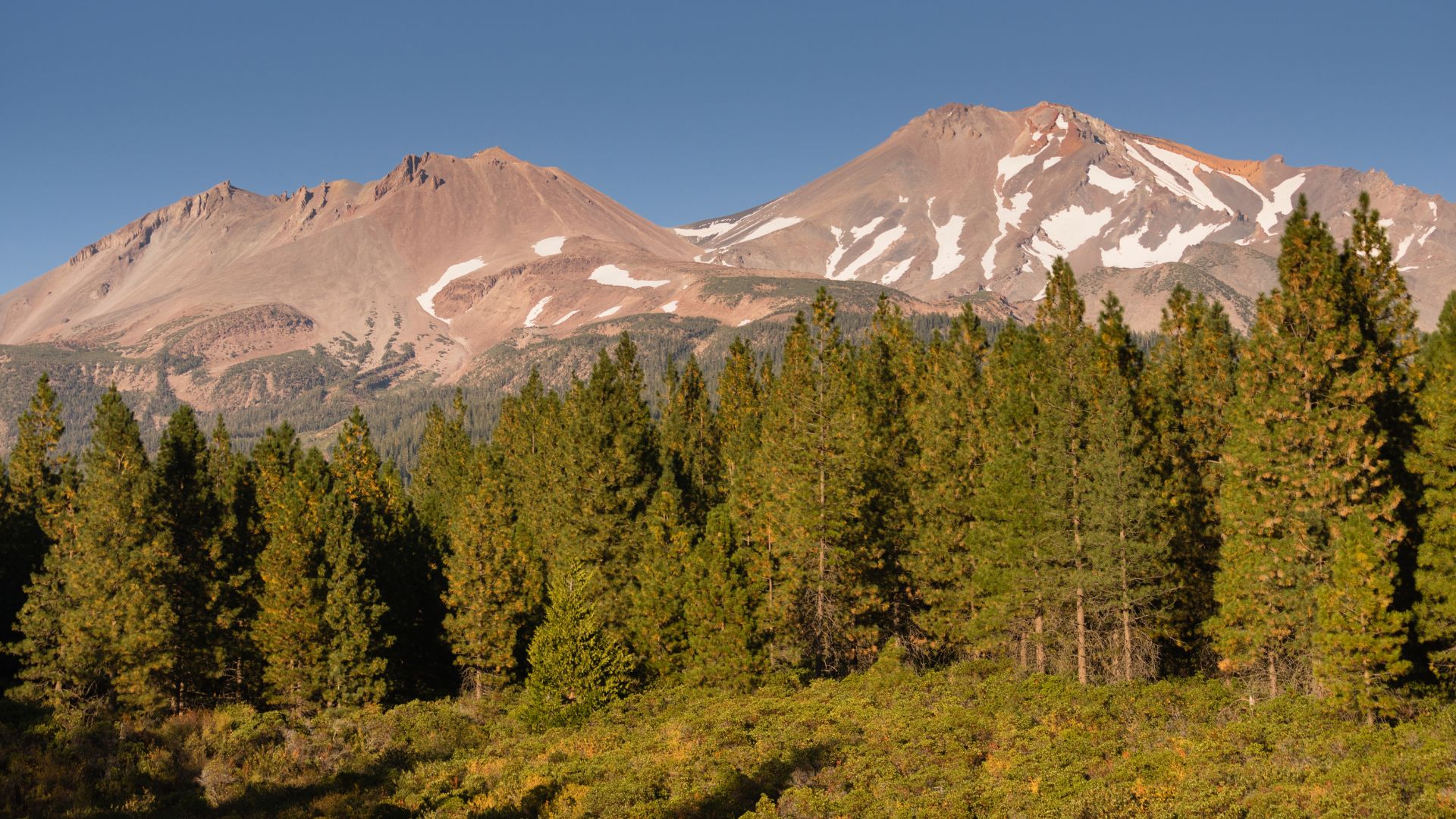
Best Times for Fall Photography
Peak color usually hits mid-October to early November. Higher elevations turn first, then the valleys follow.
Warm days and cool nights make the colors pop. If it’s rained recently, expect even brighter leaves.
Early mornings are magic. The golden light makes everything glow, and overcast skies help you avoid harsh shadows.
For gear, I swear by a circular polarizer to cut glare and boost color. Underexposing a bit brings out richer tones.
Check local fall color reports before you go. Things change fast, so staying flexible helps.
The window for peak color lasts about 2-3 weeks in each spot. If you can, visit different elevations to stretch your leaf-peeping season.
Seasonal Festivities and Local Events
Autumn festivals burst with energy across the region, mixing those fiery fall colors with a strong dose of local flavor. You’ll find everything from quirky contests to cozy food stands, and somehow, it always feels like the whole community comes out to celebrate.
Mount Shasta goes all out with autumn events every October. Locals lead guided photo walks and host workshops right when the leaves hit their peak.
Over in the Redding area, you can wander through harvest festivals and farmers markets. It’s honestly the best time to sample fresh produce while soaking up the gold and crimson scenery.
Photography groups get pretty creative this time of year, organizing fall color tours that chase the best views. I’ve joined a few, and there’s just something about a group of shutterbugs geeking out together in the middle of a glowing forest.
If you’re near the coast, don’t miss the cranberry festivals in October. The North Coast shows off a whole different palette of fall colors—think deep greens and rusty reds.
Vineyards in wine country come alive during harvest. You’ll catch golden and burgundy leaves tangled with rows of grapes, and if you’re lucky, maybe a wine-tasting or two.
Plenty of spots offer photography workshops focused on autumn. I’ve picked up a few tricks at these—especially when it comes to capturing that elusive golden-hour glow.
Spring Waterfalls: Chasing Cascades and Seasonal Blooms
Spring hits the Shasta Cascade region like a wake-up call. Snowmelt and rain turn lazy streams into wild, thundering waterfalls. Wildflower meadows pop with color, and the trails feel fresh before summer crowds show up.
Must-See Waterfalls at Peak Flow
If you see only one waterfall, make it Burney Falls. It drops 129 feet year-round, but in spring, it’s a jaw-dropper. Over 100 million gallons of water crash down every day when the snow melts.
McCloud Falls is a triple treat. Lower McCloud Falls is easy to reach, Middle McCloud Falls has the biggest swimming holes, and Upper McCloud Falls stays quiet and tucked away.
Spring-Only Waterfalls:
- Burstarse Falls (50-foot main drop)
- Root Creek Falls (multi-tiered cascade)
- Faery Falls (40-foot historic waterfall)
Mossbrae Falls feels like something out of a fantasy novel. Spring water seeps through mossy cliffs, creating a massive curtain—50 feet high and 150 feet wide. It’s unreal.
If you’re up for a little adventure, the Little Backbone Creek Natural Waterslide is a must. Smooth rocks and spring flows turn it into a natural waterpark—just brace yourself for chilly water!
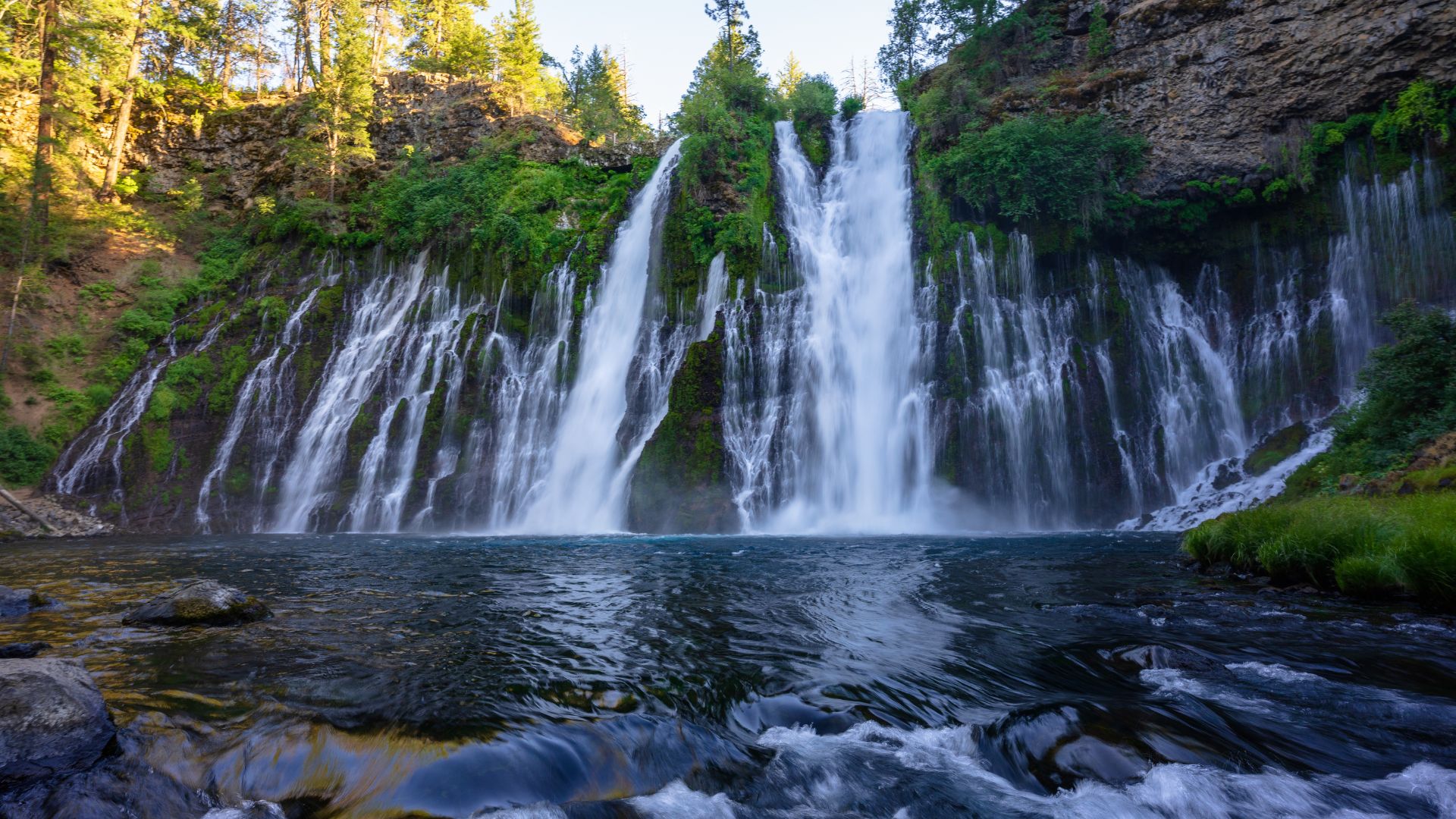
Wildflower Hikes and Meadow Walks
Spring turns the Shasta Cascade into a wildflower wonderland. I usually find the best blooms from March through May, but it really depends on how much snow stuck around.
The Ney Springs Canyon Trail is a favorite of mine. It’s a mellow 1.2-mile walk to Faery Falls, and the meadows along the way explode with color when the season’s right.
Best Wildflower Locations:
- Castle Crags State Park meadows
- McCloud River trails
- Shasta Lake shoreline areas
Low elevations bloom first, usually in March. Higher up, the show peaks in May or early June.
Waterfalls and wildflowers together? That’s a photographer’s dream. If you’re heading out, bring a waterproof camera—you’ll want to get close, and you’ll definitely get splashed.
Tips for Visiting During Spring Runoff
Spring runoff? It’s wild—waterfalls become downright dangerous. Before I go, I always check the water levels, and honestly, I steer clear of those roaring currents.
Safety Essentials:
- Waterproof hiking boots (trust me, soggy socks are no fun)
- Extra layers for surprise weather shifts
- Emergency whistle
- First aid kit
Spring trails can surprise you. Mud and slick rocks turn a simple walk into a real challenge near any waterfall.
I usually bring hiking poles for a bit of extra balance. They’ve saved me from more than one embarrassing slip.
If you want the best experience, try heading out in late morning. It’s warmer by then, but you’ll still beat the bigger crowds.
March and April visits? They’re quiet, almost peaceful. You might even have the place to yourself.
Parking at spots like Burney Falls or McCloud Falls doesn’t last long on weekends. I always aim to get there before 9 AM, or I plan a weekday adventure.
Don’t forget rain gear—even when the sun’s shining. Northern California spring weather flips fast, and that waterfall mist? It’ll soak you in no time.

